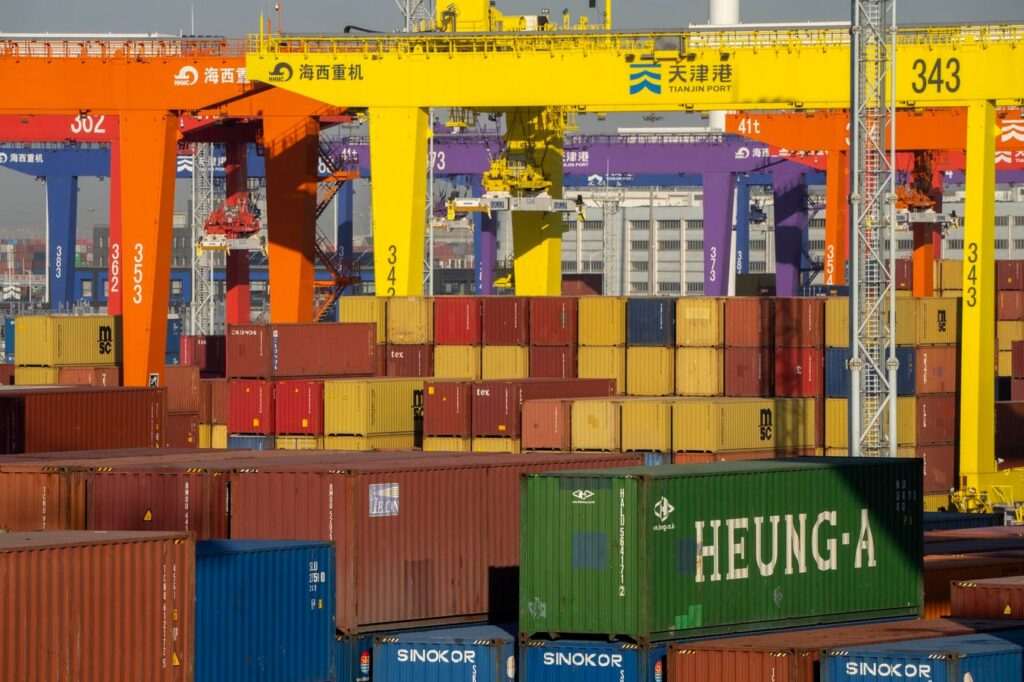The ongoing debate about how the U.S. government is funded and how trade is conducted has been a focal point of political discourse, particularly under the influence of former President Donald Trump. While examining these issues is crucial for effective governance, it becomes problematic when misconceptions about tariffs and trade are perpetuated. Tariffs, often promoted as a method of generating revenue from foreign entities, are in fact taxes imposed on imported goods, which are paid by U.S. businesses that import these goods. Consequently, the additional costs incurred by tariffs are typically passed on to consumers, making them responsible for the increase in prices rather than foreign manufacturers.
Advocates like Oren Cass argue that tariffs, which are deposited into the Treasury, have the potential to replace various forms of taxation. They suggest that making imports more expensive could stimulate domestic production, thereby creating economic value. By doing so, it could mitigate the disruption caused by global supply chain issues, as evidenced during the COVID-19 pandemic. Nonetheless, while the argument has some merit, it fails to comprehensively cover the implications of increased costs for consumers and businesses alike. If tariffs significantly raise prices, this could lead to inflation levels that dwarf the economic challenges seen during and after the pandemic, particularly affecting lower-income households.
International trade offers distinct advantages, including more competitive pricing for many goods. A rise in tariffs could result in substantially higher prices, making it more challenging for the U.S. to export products to international markets. The dynamics in global competition mean that the United States must be cautious; excessively high costs could harm businesses that rely on selling their products abroad. The ramifications of price increases would disproportionately impact lower-income individuals, many of whom already struggle with the cost of living, especially housing. Additionally, while there has been some movement toward bringing manufacturing back to the U.S., it must be acknowledged that an increase in production costs could hinder rather than help economic recovery.
One of the primary claims made by proponents of tariffs is the return of manufacturing jobs, particularly in the tech sector, such as semiconductor production. However, the reality is that the U.S. already has domestic chip manufacturing capabilities and is ranked fourth globally, trailing behind countries like Taiwan and South Korea. The establishment of facilities like TSMC’s advanced foundry in Arizona indicates a positive shift in domestic capacity, independently of tariff policies. This challenges the notion that tariffs alone will significantly contribute to reviving specific sectors of manufacturing.
Historically, tariffs have been a source of government revenue, but the shift away from this model began in the late 19th century when the public became aware of the negative economic impact that tariffs had on overall prices. The problem with tariffs is their regressive nature, affecting all economic levels equally, which can potentially harm those at the bottom of the wage scale more severely. While there may be political appeal in taxing imports as an alternative to income tax—a move that would particularly benefit wealthier individuals—the practical implications render this idea less feasible.
If the U.S. were to consider eliminating income tax in favor of tariffs as a primary revenue source, significant calculations must be considered. As of 2023, U.S. imports totaled approximately $3.83 trillion; meanwhile, federal revenues reached about $4.44 trillion, with nearly half derived from individual taxes. Simply imposing a 69.7% tariff on all imports to replace income tax revenue would result in an untenable rise in consumer prices and fears of economic depression. Such drastic fiscal policies would necessitate difficult trade-offs, likely leading to severe cuts in essential programs like Social Security, Medicare, and military expenditures. In summary, while tensions surrounding tariffs and government funding are valid, the understanding of their economic implications requires a nuanced perspective that balances be the benefits of domestic production with the realities of a global economy.

